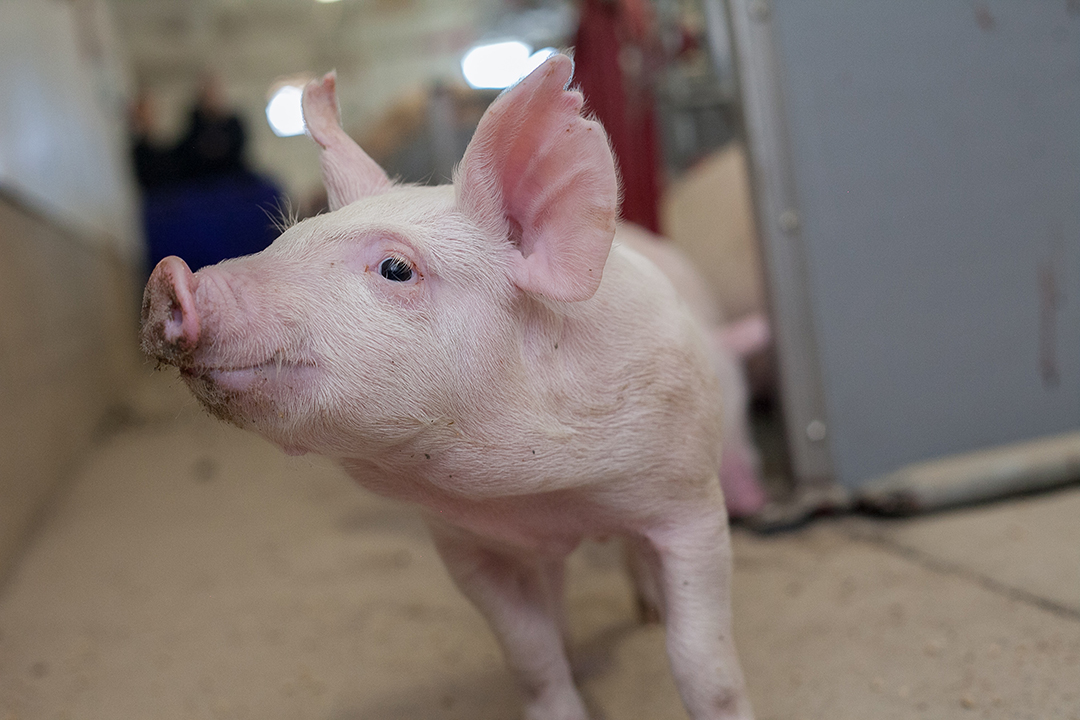
This little piggy went to market
How well do weaned piglets cope with stress during transport? Western Canada exports large numbers of weaned piglets each year, but the effects of these transports on piglets’ health and welfare is poorly understood.
By Emily SmithA team of swine behaviour researchers at the Western College of Veterinary Medicine, the Prairie Swine Centre (PSC) and the University of Guelph have been working closely with producers to assess the effects of long transports on commercially reared piglets.
Although the majority of previous studies have focused on grown pigs that are being transported to market, little is known about the physical or psychological effects of long-duration transport on weaned piglets that are being shipped to grow/finish facilities.
“Nursery piglets are different from market pigs, notably due to tthe weaning process they undergo just prior to transport,” explains Dr. Jennifer Brown, a research scientist in ethology at PSC.
“It’s not clear whether transport stress is additive to weaning stress or whether … [being] on the trailer helps them to get over the social stress of mixing … allowing them to get onto feed faster.”
Animal welfare studies are complex investigations that require the scientists to collect both behavioural and physiological measures in order to develop an image of animal well-being.
To assess the well-being of their subjects, Brown and her research team have been collecting data on factors such as death rates, hydration status, blood enzyme levels, and fighting behaviours under short and long duration transportation conditions. They’ve also been logging temperature and humidity variations between trailer compartments during the different journeys.
By comparing the differences in stress responses in piglets undergoing short and long transports, the researchers will provide valuable scientific evidence that can guide the Canada Food Inspection Agency’s (CFIA) proposed policy changes to the swine transportation code of practice.
The CFIA decided in February, 2019 that the legal limits of transportation duration for pigs be reduced from 36 hours to 28 hours – the current American limit. This has Canadian producers concerned about time limits being set without any supporting scientific data.
“Such a policy change could potentially be a non-science based barrier to the market for industry participants,” says Daryl Possberg, the general manager of Saskatchewan’s Polar Park Farms. “Increasing regulations that have no bearing on pig outcomes would simply add financial and environmental cost to pork production.”
Industry partners such as Possberg are critical to swine ethology research since they provide study subjects in commercial settings. In turn, he recognizes the importance of scientific studies regarding swine welfare, particularly piglet transport since his company transports up to 450,000 pigs each year.
“The more [we know], the better decisions we can make,” says Possberg. “When there is a good healthy pig, competent loading personnel, good facilities, appropriate stocking densities and a good driver, [I think that] pig welfare is very good today.”
Possberg explains the economic advantages of shipping the piglets to fnishing facilities in Ontario and Iowa where there’s easier access to lower cost feed and abbatoirs. Geographical separation of farms decreases the vertical transfer of disease from parent to offspring – a measure that contributes to Western Canada’s high herd health status.
While Brown’s initial study is focused on the impact of current transport conditions on weanling pigs, subsequent studies will examine other factors such as trailer types, options for climate control and internal hydraulics and provisions for water and electrolytes. In the future, new trailer designs and technologies that improve the quality of transport could reduce the impact of long hauls on the animals.
“Better trailer designs…will take into consideration the variation in weather and temperature seen in Canada,” says Possberg. “Trailers should be more responsive to changes in outside temperature, and in the event of a snowstorm causing a road closure, it would be nice to have the ability to provide water to the animals on board.”
Brown agrees that trailer design may be an important factor and points out that Canada’s climate and vastness present unique challenges to swine production: “Most transport research has been done in European countries where they have shorter hauls, different road conditions, and less seasonal variation.”
Brown also emphasizes the importance of industry partners such as Possberg whose co-operation makes these important welfare studies possible.
“I appreciate the practical experience of producers and their vital contributions to science. When conducting research, we strive to create a positive experience for the producers, transporters, and pigs alike,” she says.
This project is funded by the Agriculture Development Fund of Saskatchewan.
Emily Smith, of Regina, Sask. will begin her third year of veterinary studies at the WCVM in August 2019. Her story is part of a series of research articles written by WCVM summer research students.
